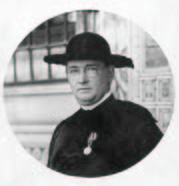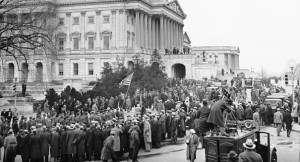St. Patrick’s: A Cornucopia of Spiritual and Secular History
By Victor Essel
If you are getting off of Liberty Avenue at 17th street, perhaps to visit Wholey’s fish market, you might have noticed an old church with a garden grotto surrounded by stone walls and filled with 3 trees in the center. Turn right and you will find yourself at St. Patrick’s Church, on 1711 Liberty Avenue. It is the direct descendant of the oldest church in Pittsburgh.
“The building at St. Patrick’s is the third generation. It was the first Catholic church in western Pennsylvania,” said Cynthia Helffrich, Director of Communications at Neighbors in the Strip.
The parish was originally established by Rev. William F.X. O’Brien in 1808 to accommodate about 20 Catholic families living in the area. In 1854, St. Patrick’s experienced its first fire and destruction. A machine shop went up in flames next door; the fire spread to the church and destroyed the structure that was originally on 11th street.
A second fire occurred in 1935, but Father James R. Cox had the church rebuilt on March 17, 1936. During the reconstruction, a piece of the Blarney Stone from Blarney Castle in Ireland was placed in the tower sheltering the baptistery.
The old church is quite small, but classically pretty. And the parish is still active. “The church still holds Mass twice a week. Lots of people like to have weddings there because of its beauty,” Helffrich said.
Father Cox was easily St. Patrick’s most famous pastor, and one of the most notable in the whole history of Pittsburgh. In 1925, he established a local radio station to broadcast daily mass –a practice that lasted for 33 years. During the Depression, St. Patrick’s became a relief center for the poor, distributing over two million free meals, 500,000 baskets of food, clothing and fuel under Fr. Cox’s direction.
When shantytowns began to appear, Fr. Cox made sure the unemployed were taken care of by providing them with sanitary facilities. “The poor in this area weren’t as disease-ridden as in some other particular areas,” Ms. Helffrich said. “He was a very interesting man. He led a group of unemployed people to Washington to beg for relief,” she said.
Interestingly, Fr. Cox also ran for president with a party called the “Jobless Party” during these times.
The current pastor is Rev. Harry E. Nichols. He directs Mass at St. Patrick’s and St. Stanislaus Kostka church – the two churches having merged in 1993 as the Catholic population declined with the rest of the city’s population. By then, as in many other neighborhoods, the population in the Strip no longer justified two autonomous parishes.
St. Patrick’s church contains catacombs underneath and a set of “Holy Stairs” in the main room. People go on their knees in devotion when using these stairs. As an act of holy devotion, the religious ascend the stairs on their knees to symbolize their faithfulness. The Holy Stairs signify the twenty-eight steps between Christ and Pilate when Pilate said, “Behold the Man” and condemned Him to death.


 Next Post
Next Post